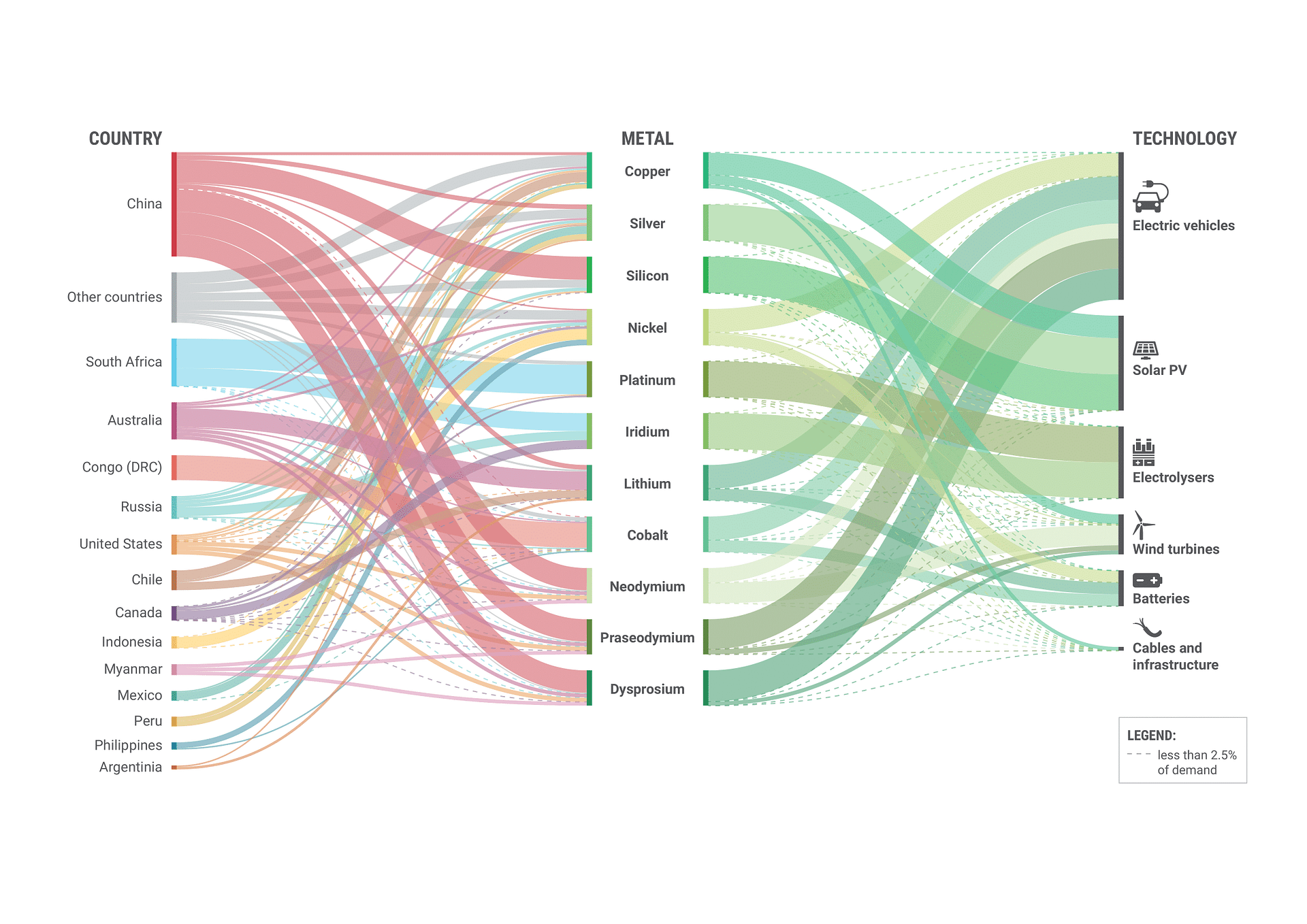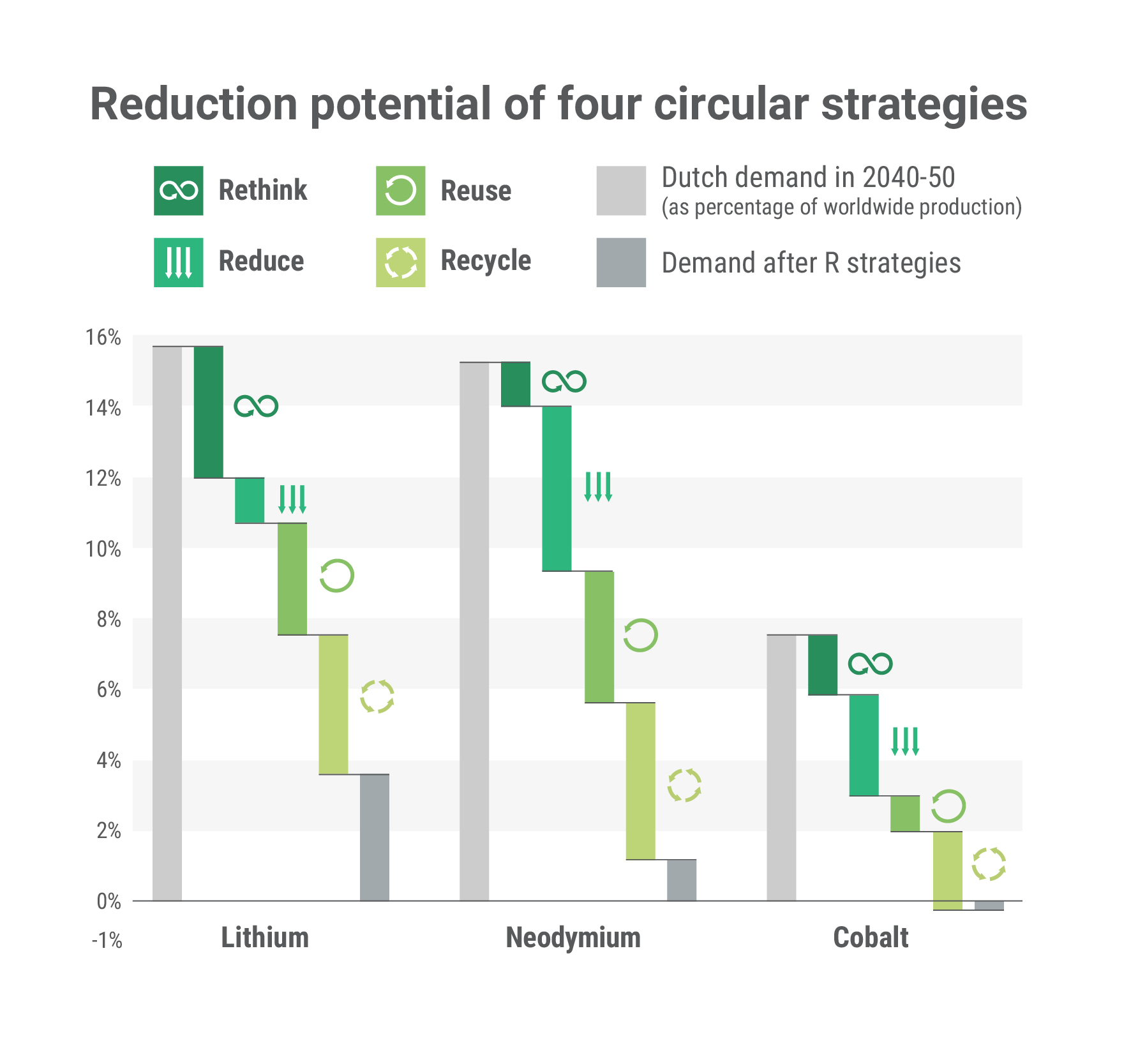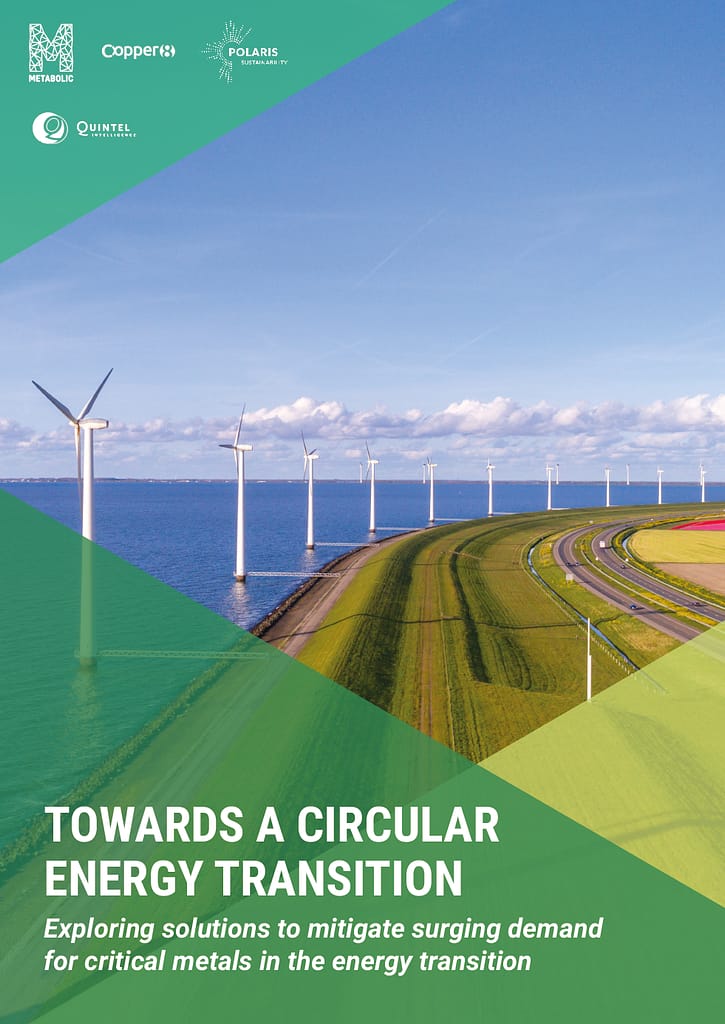Circular strategies for mitigating surging critical metal demand
Modeling the critical metals needed for the Dutch clean energy transition and identifying circular economy principles that mitigate supply risks.
Concern about the availability of critical metals is growing. Such rare or scarce metals, like lithium or cobalt, are vital to the world’s major economies and crucial for a transition to a renewable energy system in the Netherlands. At current levels, the global supply of these metals is insufficient, and the Dutch demand for them is no exception. This study offers insight into the demand of critical metals domestically, offers perspectives on how to reduce this demand, and demonstrates the opportunities that these new measures would present.
- Partners: Copper8, Polaris Sustainability, Quintel
- Clients: Invest-NL, Provincie Zuid-Holland, Provincie Flevoland, Stedin, Alliander, Enpuls, Rijkswaterstaat
- Date: September 2021
- Date of update: October 2023 (client: Netbeheer Nederland)
How can we reduce our dependence on critical metals?
The Netherlands, Europe, and the world face the task of significantly reducing CO2 emissions. To prevent
serious climate change, global emissions must be halved over the next 10 years. This requires the large-scale application of sustainable technologies such as solar panels, wind turbines, electric cars, electricity storage, and hydrogen. These technologies require critical metals such as nickel, neodymium, and platinum. The available amounts of these metals poses a significant risk to a successful transition to renewable energy.
Modeling future demand and setting circular economy strategies
The first step was to develop a comprehensive model to forecast the future demand for critical metals specific to the Dutch transition to renewable energy. We based this on a comprehensive study of future pathways for a Dutch renewable energy system. We also included technology and innovation developments, and we followed trends and forecasts from other studies.
The second step was to define the circular economy strategies that could reduce the total demand, and calculate the potential contribution they could each have separately and in total, to reduce our dependence on critical metals.
We also interviewed organizations in the (critical) metal industry to identify potential opportunities.
Combination of strategies can have significant impact
The project demonstrated that a combination of circular strategies can significantly reduce the demand for critical metals. If governments set more policies to encourage circularity within renewable energy technology, the supply of critical metals would be more stable in the future, ensuring a more successful clean energy transition.




”The circular economy is key to the success of the energy transition.“
Pieter van Exter, Circular Industries Lead at Metabolic
Director of Product – Metabolic Software
ANY QUESTIONS?
For more information about this project, please get in touch.






